The drill is one of the essential power tools when it comes to woodworking. Apart from professional use, it is immensely useful for DIY projects as well as daily use. To perform the primary function of drilling holes or driving screws, a drill is an absolute necessity.
However, cordless drills spark much anxiety in beginners. For this reason, we have dedicated this article to describe and explain how to use a cordless drill through a step by step detailed guide.
Contents
How To Use A Cordless Drill – Step By Step Guide
Being a power tool, a drill is meant to ease our work and add to our comfort. Not knowing how to use a drill can make the entire woodworking process unnecessarily tiring.
A cordless drill works like a regular drill, but a battery powers it. Here is a step by step guide for you to help you understand how cordless drills work, right from the basics.
Total Time: 1 Hour
Step 1: Know Your Tool
The first step is to understand what the different kinds of switches on your tool are meant for. Are you confused by the numbers written around the dial? Let us begin to know the function of each part one by one in detail.
A. Chuck
Chuck is that part of your cordless drill/driver where the drill bit gets inserted.
The chuck holds the drill bit throughout the drilling process.
There are various types of the chuck. The three most important types of the chuck are keyed chuck, double sleeve keyless chuck, and single sleeve keyless chuck. Your cordless drill will have any of these three types of the chuck.
A keyed chuck is the most impractical of the three because of the likelihood of misplacing or losing the key, without which you cannot tighten and loosen the drill bits.
A double sleeve keyless chuck is comparatively more comfortable to use. It requires both hands. It has two parts. With one hand, you have to adjust the dial (rear part) to loosen or tighten the drill bit, while with the other hand, you have to firmly hold the front part.
A single sleeve keyless chuck can be held and operated easily with one hand.
B. Clutch
A clutch or slip clutch, which is also known as torque control, is a dial (which is like an adjustable collar) with numbers on it, located just behind the chuck.
The numbers on the dial show the amount of torque produced by the drill. A higher number means higher torque. You need high torque and low speed while driving screws. Low torque with high speed is needed while drilling large holes.
C. Trigger
You will not have difficulty, nor any confusion in having to find the trigger. The function of a trigger is simple. You press it before driving or drilling, and the drill motor starts. But do not press the trigger until you are all set.
D. Forward/Reverse Control
Forward control is used to drive the drill in a clockwise direction. Reverse control drives the drill in a counterclockwise direction. There are buttons on either side of the handle. The reverse control is used for unscrewing.
E. LED Light
Lots of cordless drills have LED lights to enable the user to work in dark areas.
F. Bit Holder
As the name suggests, bit holders are used to storing bits while you work.
G. Power Source
The power Source is located at the bottom. This is where the battery goes in.
Step 2: Drill Bits
To use your cordless drill, you must be fully acquainted with drill bits. If you already know what drill bits are, what are the different types of drill bits and how they work, then you can skip to the next step, that is, Step 3.
Different Types Of Drill Bits:
1. Screwdriver bits: Screwdriver bits are used in fastening, which is to drive screws.
A lot of them can be inserted directly—some need to be fitted into a holder which can then be inserted into the chuck.
2. Twist Bits: Most popular among bits, they can be used for drilling through metal, plastic, timber, etc. They are made of HSS (high-speed steel) and are quite useful. Most of them can be sharpened easily, except TiN (titanium nitride) bits.
3. Masonry Bits: Masonry bits are used to drill through concrete, brick, stone, etc.
4. Wood Bits: Also known as Spur point bits, they have a central point and spurs to maintain the bit in a straight position.
5. Tile Bits: Used for ceramic bricks and tiles.
6. Paddle Bits: Used for drilling large holes. Always remember to wear protective glasses because these drills can produce splinters.
Step 3: Insert the Selected Drill Bit into the Chuck
Twist the chuck in the counterclockwise direction to loosen it. The diameter of the jaws that hold the drill bit will widen.
The smooth part of the drill bit, called the shank, is inserted into the jaws. The next step is to securely tighten the chuck.
Tip: Be careful while inserting the drill bit. The drill bit must be centered. Make sure that the jaws clamp on the shank and not on the flutes of the drill bit as it can break or damage the bit.
If you want to speed up the tightening process of the drill chuck, you can grab the chuck and run the drill in a clockwise direction after inserting the bit. Be careful not to hold the drill bit while doing this.
Also, make sure that you run the drill clockwise. If you run the drill in the counterclockwise direction, you will end up loosening the chuck instead of tightening it.
Step 4: Manage SpeedSettings
Managing speed settings is one of the essential parts of drilling or driving. Most one speed drills have speed control in their triggers. The harder you press the trigger, the faster it gets.
However, two-speed drill bits are for more precise speed control. Most cordless drills have a big switch on the top, which has settings for low speed, high torque and high speed, low torque. Low speed, high torque is ideal for driving screws.
Step 5: Manage Torque Settings
The numbers written on the dial behind the chuck depict the torque setting. You need to alter the torque setting, depending on the task you are going to perform.
The drill will stop spinning if the torque is set too low. On the other hand, if the torque setting is too high while driving a screw, the screw head might get rounded off by the bit.
Make sure to set the torque to the highest number while drilling. In some drills, there is a drill bit symbol, and you can rotate the dial-up to the drill bit symbol while drilling.
Step 6: Set Up the Material You Want to Drill
Congrats! You are just one step away from actually drilling holes.
In this step, you have to set up the material that you want to drill. Now that may seem like an easy job, especially if you have to drill and drive a screw into the wall so that you can hang your favorite painting on it. But, in case you are dealing with a DIY project, you sure do need to read this step.
Setting up material for drilling is not that hard. All you have to do is a place and fix the material you want to drill to a firm surface using a clamp or vise. You can put a piece of wood that you do not need underneath the material to be drilled. This will ensure a cleaner edge.
Before you start drilling, make sure to mark the material where you want to drill.
Step 7: Drill
Finally, the most awaited moment!
Before you begin to drill, ensure that the drill bit is in touch with the material exactly where you want to drill. Take care of the angle of the drill. If you hold the drill bit perpendicular to the material surface drill will produce a straight hole.
At first, drill slowly. Once the drill bit is inside the material, start increasing the speed. Keep applying constant pressure until you cut completely through the material. After drilling through the material, keep the drill moving in the same direction and pull it outwards. This way, you can also clean the hole just drilled.
Tip: Before drilling, make sure that the battery is fully charged. Since a cordless drill runs on a battery, it is vital to charge the battery after long hours of work. Also, an uncharged or low battery drill will not work effectively. It might affect its speed.
Top Three Cordless Drills
Here is a list of the top three cordless drills.
1. Black+Decker LDX120C
- Lithium Ion Technology & 20V MAX: Lighter, more compact, no memory, longer life
- 11 Position Clutch: Provides precise control for drilling into wood, metal, plastic, and all screwdriving tasks
- Compact and Lightweight: Less fatigue and allows users to drill / screw in confined spaces. Part of the 20V MAX* System...
Black+Decker LDX120C is one of the best selling cordless drills. Not only are they lightweight, ergonomic, and easy to use, but are also quite durable.
Plus, it comes with a limited warranty of 2 years.
Specifications:
- Weight: 3.15 Pounds
- Dimensions: 10.63 x 3.69 x 8.5 inches
- Chuck Size: 3/8 inch
- Clutch Setting: 11
- Voltage: 20 Volts
- Wattage: 1500 Watts
- Torque: 115 Inch Pounds
- Speed: 650 RPM
- Power Source: Battery
- Battery Cell Type: Lithium-Ion
- Average Battery Life: 1 hour
Features:
- 20 V Drill/Driver Kit is perfect for drilling through different materials, be it wood, plastic, or metal.
- Suitable for all sorts of screw driving tasks.
- 11 position clutch setting allows better control while drilling or driving.
- Speed is variable, which allows countersinking without damaging the material.
- The lightweight and compact structure make it easier to be carried around and used in confined spaces.
- Contains an LED work light.
2. DeWalt DCD791D2
The next in our list of best cordless drills is none other than DEWALT DCD791D2. It comes with a three-year limited warranty.
Specifications:
- Weight: 3.5 Pounds
- Dimensions: 16.22 x 4.5 x 10.1 inches
- Chuck Size: 1/2 inch
- Chuck Type: Keyless
- Clutch Setting: 15
- Voltage: 20 Volts
- Torque: 600-inch lbs
- Speed: Low- 0 to 550 RPM, High- 0 to 2000 RPM
- Power Source: Battery
- Battery Cell Type: Lithium-Ion
Features:
- 57% more run time due to brushless motor as compared to brushed.
- 6.9-inch compact structure to facilitate the drilling or driving in narrow and confined spaces.
- The ergonomic handle provides a better grip and balance.
- Variable speed with two-speed settings, high-speed performance.
- Chuck size is ideal for fantastic drill bit gripping strength.
3. KIMO K1005A
- 【𝟑/𝟖" 𝐒𝐪𝐮𝐚𝐫𝐞 𝐃𝐫𝐢𝐯𝐞】If you find yourself doing more precise work around the...
- 【𝐏𝐨𝐰𝐞𝐫𝐟𝐮𝐥 𝐁𝐫𝐮𝐬𝐡𝐥𝐞𝐬𝐬 𝐦𝐨𝐭𝐨𝐫】KIMO 20V impact wrench...
- 【𝐕𝐚𝐫𝐢𝐚𝐛𝐥𝐞 𝐒𝐩𝐞𝐞𝐝 𝐓𝐫𝐢𝐠𝐠𝐞𝐫】Forward & reverse button can...
KIMO K1005A is a compact, heavy-duty cordless drill. It can be used to drill metal, steel, wood, as well as in masonry.
Specifications:
- Weight: 5.16 Pounds
- Chuck size: 3/8 inch
- Clutch Setting: 18+1
- Voltage: 12 Volts
- Torque: 280 Inch Pounds
- Speed: Low- 0 to 350 RPM, High- 0 to 1350 RPM
- Power Source: Battery
- Battery Cell Type: Lithium-Ion
Features:
- A reliable and lighter alternative to 20-volt cordless drills.
- Enhanced runtime by 25%
- Built-in LED to facilitate working in the dark
- 18+ torque positions minimize the chances of snapping screws while driving
- The variable speed range for precise operations
- Magnetic bit holder provides a better grip to bit and makes it easier to change the bit.
FAQs
1. Can I drill metal using cordless drills?
Tough materials like steel, concrete, and brick require a lot of power to be drilled through. Therefore, if your cordless drill has a higher battery voltage, it can drill through such materials because it will have more power and torque.
2. What is the ideal voltage to look for while buying a cordless drill?
The ideal voltage is 12 to 18 Volts. For light work, 8 Volts works well too.
Final Thought
Working with a cordless drill is not tricky. Just follow our guide on how to use a cordless drill. It makes drilling a much simpler task. Once you have understood the function of all its parts, you can easily do whatever you require or want to do. These power tools are relatively lightweight, compact, and ergonomic in design. They are easy to use and are not tiring.
There is absolutely no reason to be scared of these tools. You only have to use them sanely with precaution and safety.



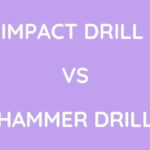
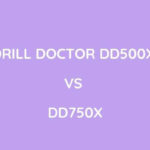

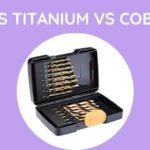
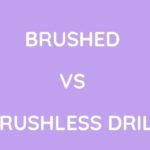

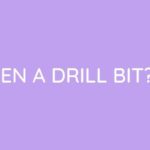
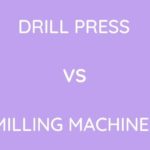
Leave a Reply